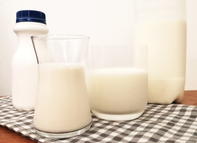Pasteurisation was invented by Louis Pasteur, a French scientist. He discovered that heating milk to a high temperature and then quickly cooling it before bottling or packaging could keep it fresh for longer.

He later moved on to work on beer and in 1873, patented a process for the pasteurisation of beer.
However, pasteurisation is no cure for bad sanitation and substandard practices, so food safety procedures and quality control is of utmost importance during the processing of raw ingredients.
In the 1800s, milk from sick animals produced in unhygienic surroundings caused the death of thousands of people. Then, farmers realised that heating milk fed to calves reduced tuberculosis in their herds.
What is Pasteurisation?
Pasteurisation is a mild heat treatment (60 - 100°C) of liquid and solid foods for a few seconds before rapidly cooling it down. Pasteurisation kills undesirable enzymes and disease-causing micro-organisms such as Salmonella, Listeria, Escherichia coli O157:H7 and Staphylococcus aureus.
The Pasteurisation Process
The temperature and duration of pasteurisation depends on the type of food and packaging. Foods that can be pasteurised include dairy products, eggs, fruit juice, cider and beer, Kosher wine, nuts, flour and honey.
Some products such as juice and wine need de-aeration, while milk needs homogenisation before being pasteurised.
The general process of milk pasteurisation is described below:
The process of pasteurisation involves heating milk to about 72°C for at least 15 seconds but not longer than 25 seconds. The milk is then rapidly cooled to less than 3°C and packaged.
The equipment used to heat and cool the milk is called a ‘heat exchanger’.
Pasteurisation is also referred to as the ‘High-Temperature Short Time’ (HTST) process.
Homogenisation
This process often precedes pasteurisation in milk. It is a high-pressure process which helps to evenly disperse fat molecules through the milk and not form a layer on top. Homogenisation does not require heat.
Microwave Pasteurisation
Solid food materials such as eggs can be pasteurised through a process called microwave pasteurisation. The pasteurisation time for destroying E. coli and Staphylococcus aureus is around 30 seconds, whereas destroying Bacillus cereus requires 90 seconds.
A cold pasteurisation process that involves treating products such as bread with microwaves, uses the pulsed power of radio frequencies in the microwave spectrum. It kills the spores that cause mould growth on bread and in this way, can render the bread mould-free for up to 60 days.
It is important to note that home microwave ovens should not be relied on to inactivate micro-organisms.
Cold Pasteurisation
Other cold pasteurisation processes include High-Pressure Processing (HPP), Pulsed Electric Fields (PEF) and ultrasound, as well as membrane technology.
During high-pressure processing, sealed products (already in its final packaging) are packed into a container and subjected to a pressure of around 6 000 bar. This inactivates micro-organisms and therefore extends the shelflife of the product. Products that can be HPP processed include ready-meals, petfood, salsa, guacamole and dips as well as juice, dairy and grain products.
PEF destroys micro-organisms (by influencing cell membranes) without major effect on the product’s colour, flavour and nutrients. PEF is not capable of inactivating most bacterial spores, so it is therefore not suitable as a sterilisation technique.
Ultrasound pasteurisation is used as a disinfectant of food and medical equipment. It can be used in combination with thermal pasteurisation of milk, beer and liquid egg products.
Some solid foods are pasteurised by irradiation with low doses of gamma rays, X-rays and electrons to control foodborne pathogens.
Pasteurisation vs UHT
Often, food packaging labels will state ‘pasteurised’ or ‘UHT’ - short for 'Ultra High Temperature’. What is the difference between pasteurisation or UHT?
Pasteurisation heats the product to around 71℃ for 15 seconds before it is cooled to 3℃.
UHT will heat the product to 137℃ for two seconds before cooling.
Both processes are used to destroy spoilage organisms.
Benefits of Pasteurisation
Pasteurisation prevents contamination in food processing factories and extends the shelflife of products. However, the heating process of pasteurisation alters the nutritional content of the product as it destroys enzymes and some vitamins, and alters certain nutrients into less digestible forms.
By Marinda Louw